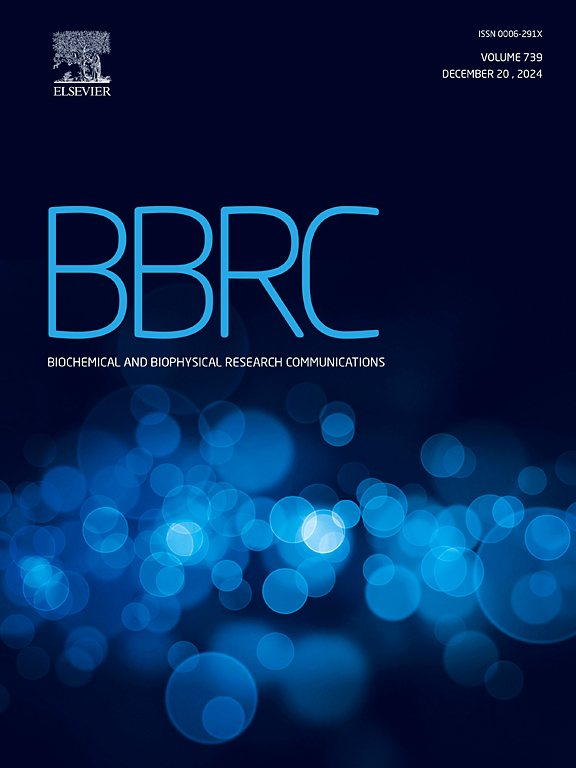OsMADS22 interacts with OsMADS50 to regulate floral transition in rice
IF 2.5
3区 生物学
Q3 BIOCHEMISTRY & MOLECULAR BIOLOGY
Biochemical and biophysical research communications
Pub Date : 2025-03-11
DOI:10.1016/j.bbrc.2025.151607
引用次数: 0
Abstract
Appropriate flowering time is critical for reproductive transition and is closely related to crop yield. In Arabidopsis, SVP, MADS-box containing proteins, interact with FLC to form a repressor complex to repress the expression level of SOC1 and FT to control flowering time. OsMADS22, one of three SVP-clade MADS-box genes, has been shown that functions as a negative regulator on floral transition in rice. However, the molecular mechanism of OsMADS22 in flowering time and genetic interaction between SVP and SOC1 homologs was unknown. In this study, we found that OsMADS22 could form homodimers and interact with OsMADS50, a putative rice ortholog of SOC1, to antagonistically regulate key flowering-related genes, including OsMADS14, RFT1, Ehd1, Hd3a, and OsMADS1. Notably, elevated expression levels of OsMADS22 were detected in osmads50 mutants, whereas the transcript abundance of OsMADS50 remained unchanged under OsMADS22-overexpressing line compared with wild-type controls, suggesting that OsMADS50 is not genetically epistatic to OsMADS22, unlike their homologs in Arabidopsis. Moreover, we showed that the interaction between OsMADS22 and OsMADS50 is mainly dependent on their K-box domains. OsMADS50 localize to the nucleus while its Arabidopsis homolog SVP localized in cytosol. Notably, we newly revealed additional roles for OsMADS50 in rice grain development. Taken together, our results elucidate the regulatory pathways of OsMADS22 on flowering time and reveal species-specific functional divergence between SVP and SOC1 in Arabidopsis and their homologs in rice, providing new insights into flowering time regulation in rice.
求助全文
约1分钟内获得全文
求助全文
来源期刊
CiteScore
6.10
自引率
0.00%
发文量
1400
审稿时长
14 days
期刊介绍:
Biochemical and Biophysical Research Communications is the premier international journal devoted to the very rapid dissemination of timely and significant experimental results in diverse fields of biological research. The development of the "Breakthroughs and Views" section brings the minireview format to the journal, and issues often contain collections of special interest manuscripts. BBRC is published weekly (52 issues/year).Research Areas now include: Biochemistry; biophysics; cell biology; developmental biology; immunology
; molecular biology; neurobiology; plant biology and proteomics

 求助内容:
求助内容: 应助结果提醒方式:
应助结果提醒方式:


